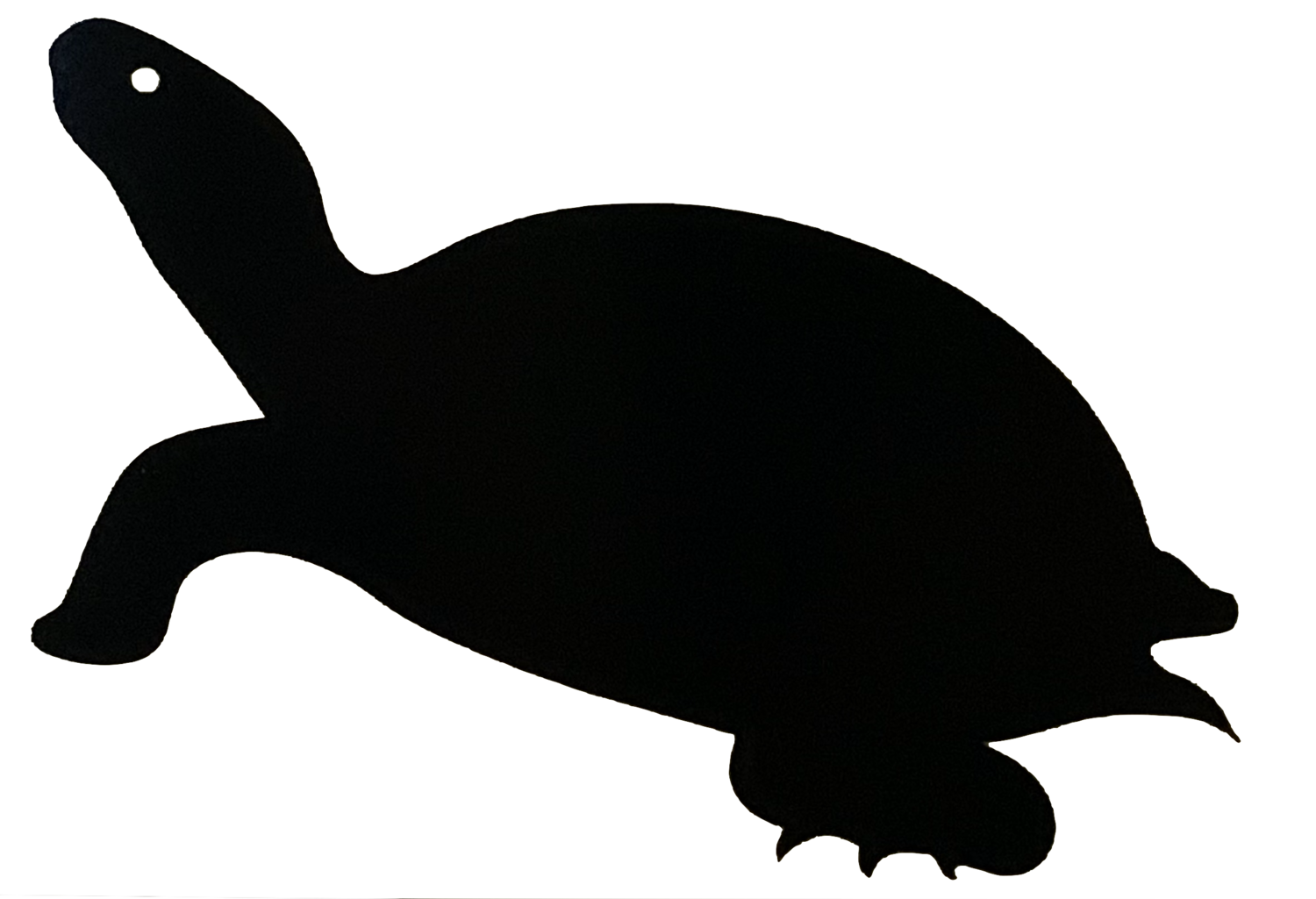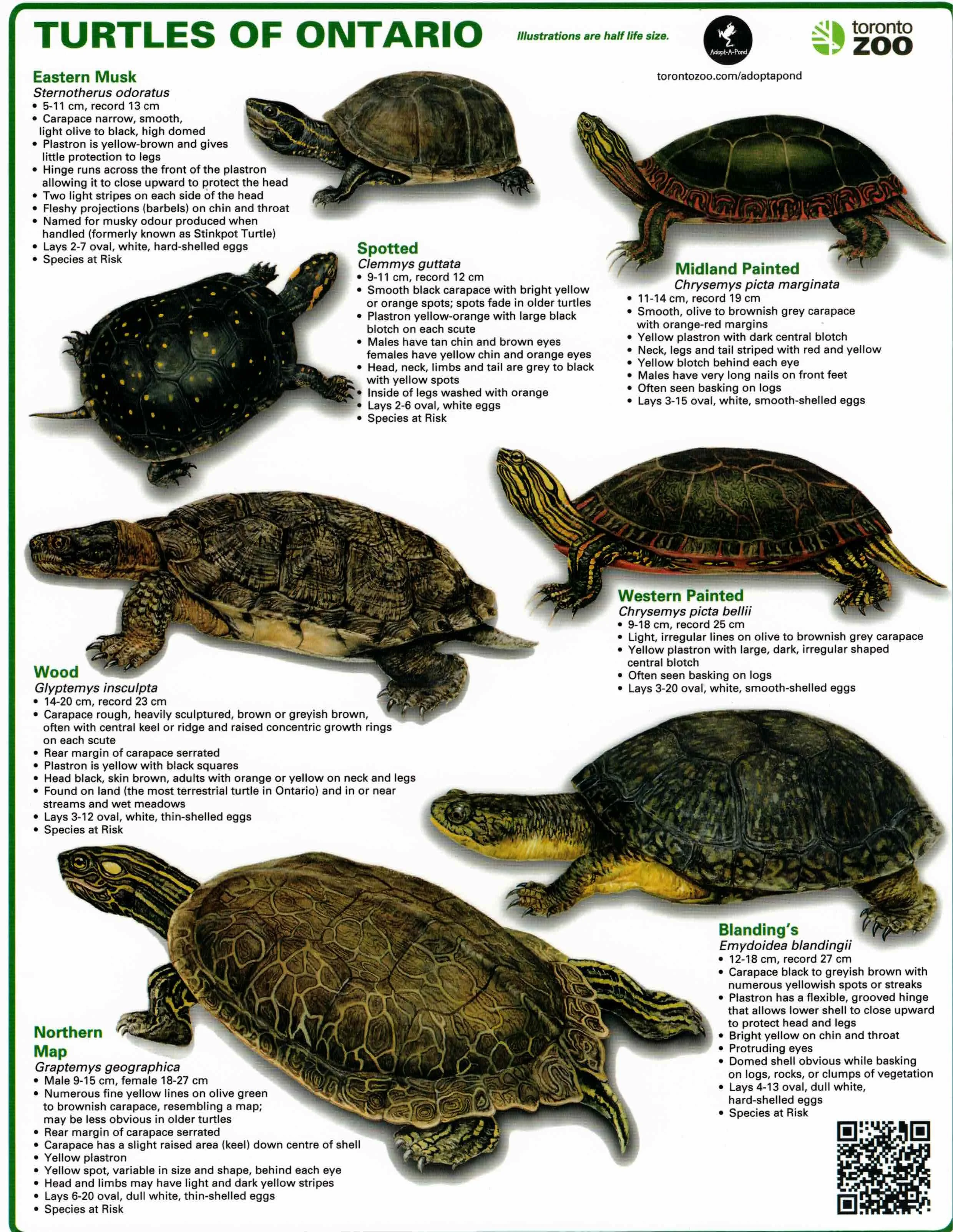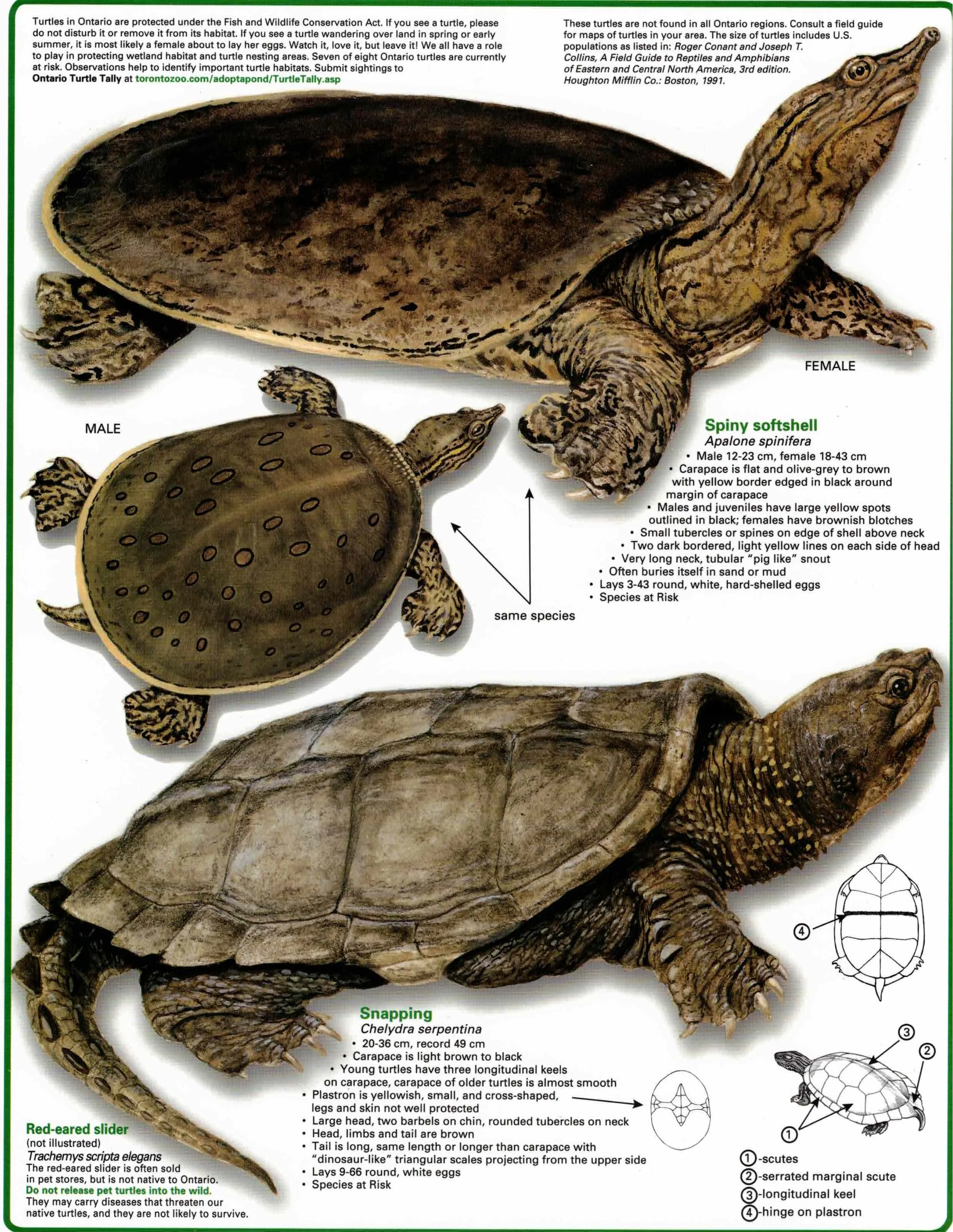Temporary Holding Station Information
Welcome to Turtles Kingston’s Turtle Trauma Response program. We thank you wholeheartedly for your participation.
The following are guidelines to assist you with your participation in the program! We ask that you please provide this information to all staff that will be assisting with the program.
You should not expect to receive a turtle before April or after October.
Thank you so much for your participation in this program! If you have any questions please don’t hesitate to email us at trauma.turtleskingston@gmail.com or turtleskingston@gmail.com or phone us at 613-888-4839 (Adrian – Trauma Coordinator) or 519-731-1844 (Tara – Director).
Images copied from the Toronto Zoo ID sheet. Please do not distribute. You can purchase your own ID sheet at: https://www.torontozoo.com/adoptapond/resources
Full Detailed Procedure for Temporary Holding Stations
The public have been encouraged to bring injured and/or dead turtles to Turtles Kingston temporary holding stations in and around Kingston, Ontario – including your amazing facility! You can find a list of our active temporary holding stations here: www.turtleskingston.com/temporary-holding-stations
Step 1
When you receive a turtle please first evaluate if it is in fact injured and/or dead. Any turtle that is not injured should not be accepted and we request that you kindly ask the individual to return the turtle to the EXACT location that it was found. This includes hatchlings.
It is key that all turtles be returned to the exact location they were found as their survival is dependent on knowing their habitat. Thus, please instruct the individual to place the turtle where they found it near water and some vegetation where the turtle can take shelter. Let them know to never release the turtle (or turtle hatchling) directly into water, but turtles can be placed near the shoreline (particularly for hatchlings).
Step 2
If the turtle is in fact injured and/or dead, please have the individual who brought the turtle in fill out the SPWC Intake Form. This intake form must be filled out so that the turtle can be returned to the correct location following rehabilitation and is required by the Ministry of Natural Resources and Forestry.
It is extremely important that this form be accurately filled out. Without accurate information Sandy Pines Wildlife Centre may be required to euthanize the turtle.
To ensure an accurate location is obtained please write the exact location the turtle was found on a provided stick-note. Include this note in the tote with the turtle.
We have moved to a digital / electronic intake form that can be found at this link: https://forms.gle/B57iW6RmG6rghpNo8. If the finder does not have the ability to complete the electronic intake form on their own please go to the provided link and fill out the form for them.
A Turtles Kingston poster with a QR code has been provided so that any individuals that drop off a turtle can easily use the camera of their phone to access the electronic intake form.
Step 3
Place the injured and/or dead turtle in one of the aerated tubs that were supplied by Turtles Kingston. Ensure the tub is lined with a soft pad and/or towel (also provided). Do not moisten the pad/towel. Do not provide any trauma treatment to the turtle, this will be done at Sandy Pines Wildlife Centre (they have the relevant permits and authority from the Ministry to intervene with a species at risk).
Please also ensure the sticky-note with the location the turtle was found is included in the tote.
When handling a turtle remember the following:
Always handle the turtle carefully and slowly, yet firmly
Never pick up or hold a turtle by the tail as it can dislocate bones and be extremely painful for them
Keep your hands behind the midpoint of their shell
Always handle turtles with both hands like a sandwich to avoid drops if they move suddenly
Be sure to support any injuries they may have, which may require additional hands or support when carrying/transporting them
It is recommended to wear protective gloves when handling turtles to minimize scratches, bites, and the transfer of bacteria
Avoid overhandling any turtle as this may stress them and cause additional injuries
Important notes on snapping turtles:
Snapping turtles snap for protection and cannot remove a finger with their bite (learn more about the myths of Snapping turtles: https://www.turtleskingston.com/blog/dispelling-myths-about-snappers)
Snapping turtles can be really heavy and may snap when picked up. The pizza carry method (firmly hold the base of their tail with your non-dominant hand, anchor your dominant arm against your side and slide that hand under their belly to lift them) can provide more stability to safely move the turtle. Smaller snapping turtles can be lifted by firmly holding the back of their shell between their back legs and tail.(video www.turtleskingston.com/moving-a-turtle)
Please explore more details about handing turtles and other information on our website www.turtleskingston.com/moving-a-turtle or Ontario Species at Risk Handling Manual: For Endangered Species Act Authorization Holders
Step 4
Wash your hands after handling any turtle.
Step 5
Contact Turtles Kingston at 613-888-4839 (text or call, Adrian – Trauma Coordinator) or 519-731-1844 (Tara – Director) to request a volunteer transport driver to take the turtle from your location to Sandy Pines Wildlife Centre. Please let us know the nature of the injure and if you are able, please provide us with the species.
If there is no answer, please leave a detailed message with your location and the condition of the turtle and we will get back to you as soon as possible.
Step 6
A volunteer transport driver will come to your location to pick up the turtle. When they arrive, please transfer the turtle to them in the tub, with the lid securely fastened.
Step 7
The tub and towel will be brought back to you for future use once it has been cleaned. If you find your tub supply is running low, please contact us at trauma.turtleskingston@gmail.com to let us know and we will drop off more for your use.
Keeping turtles overnight
Turtles Kingston will work hard to ensure a volunteer transport driver is found quickly so that you do not need to keep any injured or dead turtle for long. However, on a rare occasion you may need to keep a turtle overnight. If this happens, we ask that you please do not feed or water the turtle. Instead, place them in a cool dark place and let them be. The turtle will be picked up as early as possible the next morning.
Why we transport injured and/or dead turtles
Saving an adult turtle is key to the survival of Ontario turtle species as it takes decades for a single turtle to replace themselves!
All 8 of Ontario’s turtles are listed as species at risk (endangered, threatened, or special concern) and Kingston is home to 5 of the 8 Ontario turtles. With 70-90% of Ontario’s wetlands already gone turtles find themselves crossing roads more often than not. A species that already has a low reproduction rate, with less than 1% of all turtle eggs reaching sexual maturity, any loss of turtle life on a road is devastating to our turtle populations.
As a holding station for our trauma program, you are helping give Ontario turtle populations a chance at survival. It is important to transport dead turtles as they may be egg carrying (gravid) females. Sandy Pines Wildlife Centre can extract the eggs, incubate them, and release them back into the wild – further helping turtle populations.
Learn more about our Kingston, Ontario turtles here: www.turtleskingston.com/turtle-species
Materials and Resources
As a temporary holding station for Turtles Kingston Turtle Trauma Response Program, you have been provided with bumper stickers and informational pamphlets that you can distribute to the public free of charge. Turtles Kingston has also provided you with the Turtles Kingston identified tubs and pads/towels necessary for transporting turtles between holding stations and Sandy Pines Wildlife Centre. Please note that the tubs are for turtle use only. If at any point in time you require more of these resources, please let us know.


